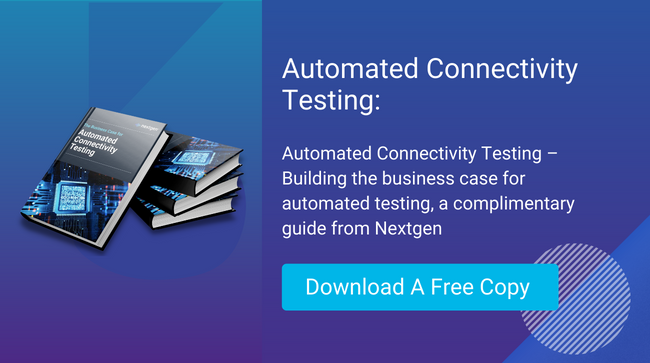An Overview Of Current Bluetooth Technology and Latest Versions (2025)

Bluetooth technology allows a wide range of consumer devices and commercial applications to connect wirelessly to other devices – and the field has seen many changes and developments over the past decade. At the time of writing (updated July 2024), the latest Bluetooth version is Bluetooth 5.4, which was specified in March 2023. Most current Bluetooth enabled products now operate on Low Energy (BLE) or ‘Bluetooth Smart’ standards, building on the principles established in Bluetooth 4.0, introduced in 2010.
In this article, we look at the most important developments in Bluetooth technology introduced since the introduction of Bluetooth LE/4.0, the new features and benefits, as well as some examples of how Bluetooth standards are being utilised in modern consumer and IoT devices.
Bluetooth 4.0 Low Energy (2010) – An Important Milestone For Bluetooth Technology
Bluetooth 4.0 was specified in 2010 to be more power efficient than previous iterations – notably ‘High Speed (HS)’ Bluetooth 3, which enabled fast data transmissions over Wi-Fi transports at the expense of high energy consumption. One of the key features of Bluetooth 4+ is its long battery life, which means products using Bluetooth 4 can last up to three times longer compared with earlier Bluetooth versions. An important feature is the ability for Bluetooth 4+ devices to operate in both single-mode and dual-mode functionality, which provides backward compatibility.
These features can be utilised in a variety of ways depending on the type of application they are being used for. For example, if you were using Bluetooth LE+ standards for a wireless headset or speaker system then you could use the single-mode functionality for efficient audio streaming while using the dual-mode functionality for more classic features and backwards compatibility.
Bluetooth 4.1 (2013)
Bluetooth 4.1 extended the range of wireless connections so that more devices could be interactively linked, expanding the potential of Bluetooth for IoT and commercial applications, as well as enhancing performance of consumer devices. Bluetooth 4.1 also helped further reduce power consumption while allowing two-way communication over rapid speeds, facilitating faster and more reliable transfers. This improved version of Bluetooth enhanced how businesses and individuals used communication technology in everyday life, making it simpler to maintain reliable connections between devices.
Additionally, Bluetooth 4.1 introduced user-friendly features such as proximity pairing, so users only needed to be in close range of a paired device instead of entering an access code or passkey. While older versions had data throughput rates of up to 2 Mb/s, these were improved upon tenfold, reaching a top speed of 24 Mb/s for Bluetooth 4.1.
Bluetooth 4.2 (2014)
Bluetooth 4.2 was specified in 2014 and brought several innovations to the communications standard that improved its applicability to Internet of Things applications. The protocol enabled greater interoperability between devices, higher encryption, faster speeds, and lower power consumption (through Enhanced Power Control, which allowed devices to save energy by quickly entering an idle state when appropriate), while also providing a better wireless range and more secure data transmissions. Up to eight Bluetooth Smart Ready controllers could now be grouped together, allowing for the simultaneous transmission of data to multiple devices at once. It included increased privacy measures as well, such as improved support for hardware-backed key distribution that enabled stronger data encryption.
Bluetooth 5.0 (2016)
Bluetooth 5.0 was developed to provide robust and reliable connections over longer distances than previous versions. For example, previous protocols could only reach a maximum of 33 feet, but with Bluetooth 5.0 this range has increased significantly to up to 300 feet in certain conditions, making it an ideal short-range wireless data transfer system for industrial applications. Bluetooth 5.0 also has double the speed of its predecessor, which allows faster data transfers from one device to another, making it an even more practical solution for commercial usage.
Bluetooth 5.1 (2019)
Bluetooth 5.1 was a major update in Bluetooth technology specified in 2019, increasing the speed, stability, and range of Bluetooth LE connections, which can now be used for connecting proximity sensors and other IoT devices. Additionally, 5.1 supports Angle of Arrival (AoA) and Angle of Departure (AoD), allowing nodes to pinpoint precisely where a signal is coming from. This feature improves the accuracy of location-based services by providing high direction resolution for tracking purposes. With its improved directional accuracy, 5.1 also delivers stronger security at long distances due to its increased resistance to interference from surrounding signals and obstacles.
Bluetooth 5.2 (2020) & 5.3 (2021)
Bluetooth 5.2, specified in 2020, upgrades the speed and range offered by older protocols while delivering enhanced security encryption to protect user data from being compromised. 5.2 also offers better location accuracy, potentially allowing wearable devices like fitness trackers to more accurately measure metrics like steps and distance. 5.2 also supports more simultaneous connections, for multiple device use in IoT applications.
Bluetooth 5.3, meanwhile, was a minor upgrade rolled out in 2021 to add greater efficiency, security, and stability to Bluetooth networks. The biggest change from 5.2 is that peripheral devices can now list preferred channels with a central device – in previous versions only the central device could set channels.
Bluetooth 5.4 (2023)
Bluetooth 5.4 is the latest version of Bluetooth which includes several improvements and new capabilities, including features optimised for retail environments. Two of the new improvements are Periodic Advertising with Responses (PAwR) and Encrypted Advertising Data. These features enable connectionless and secure bidirectional communication with very large numbers of low-power end nodes. Periodic Advertising with Response (PAwR) enables bidirectional communications in connectionless mode, a feature that permits a Bluetooth Access Point to communicate with multiple end nodes bi-directionally. Bidirectional communication of data in connectionless mode has been impossible in Bluetooth LE until the addition of PAwR in Bluetooth 5.4.
PAwR and Encrypted Advertising Data are intended for use cases that involve large numbers of low power devices transmitting small amounts of data at longer latencies to save power. For example, large scale sensor networks that don't require immediate response or in shops and retail, using the associated Electronic Shelf Label (ESL) profile – which uses PAwR to allow shops to monitor and change electronic price labels on different shelves and products remotely.
Bluetooth 6.0 (2024)
Bluetooth 6.0 introduces significant technological enhancements designed to improve device tracking, communication efficiency, and audio quality. A major advancement is Bluetooth Channel Sounding, enabling devices to accurately measure distances with centimeter-level precision through phase-based ranging. This feature greatly enhances applications such as device location tracking and secure proximity verification, vital for functionalities like digital keys and asset tracking. Additionally, the new specification offers improved data efficiency through features like Decision-Based Advertising Filtering, which allows devices to prioritize and manage advertising packets intelligently, minimising data congestion in environments crowded with broadcasting devices.
Further upgrades in Bluetooth 6.0 include the Enhanced Isochronous Adaptation Layer (ISOAL), designed to optimize audio data handling, reducing latency, and enhancing reliability for applications like hearing aids and LE Audio devices. The specification also expands the Link Layer feature set, providing developers greater flexibility and facilitating the implementation of advanced Bluetooth functionalities. Finally, configurable frame spacing between data packets introduced in Bluetooth 6.0 helps optimise device performance by allowing users to balance power consumption against data throughput, ensuring devices operate efficiently based on specific application requirements.
Next Steps
Bluetooth LE technology and the standards introduced since 2010 have revolutionised the way that consumers and business users interact with connected devices, by offering enhanced power efficiency, speed, and security. For more information about our Bluetooth testing services and how Nextgen can support your project, please contact us today on +44 3331 120 000.




